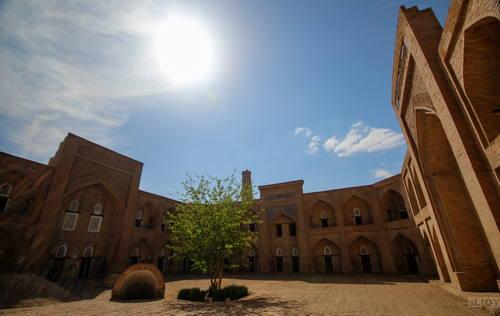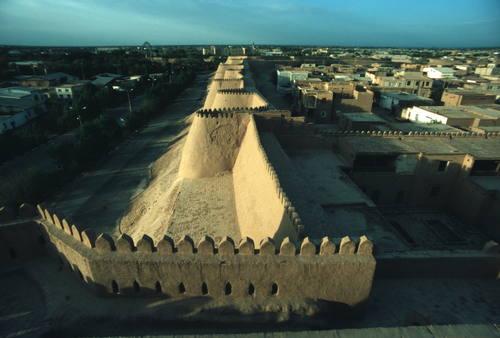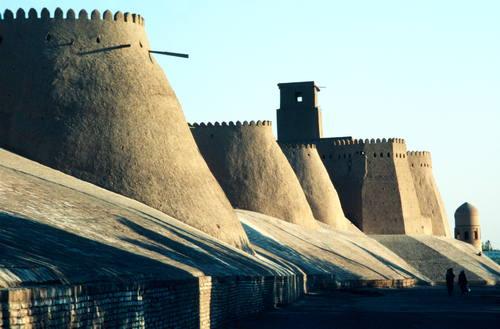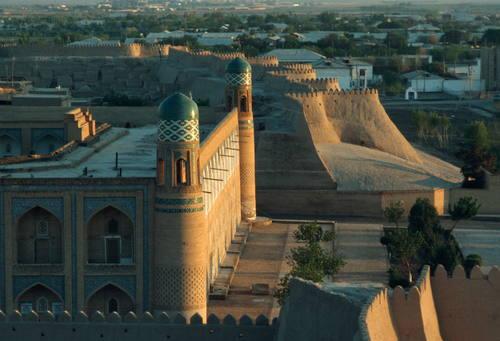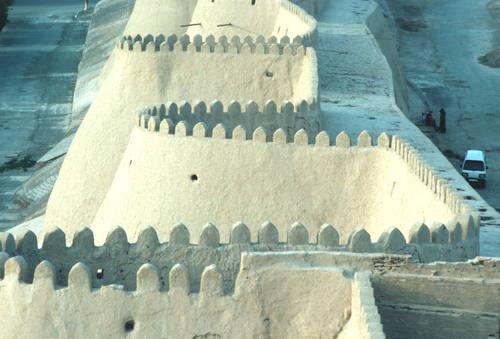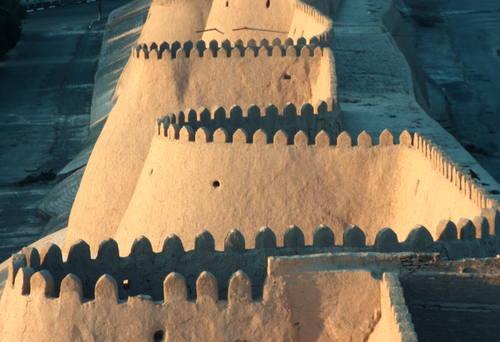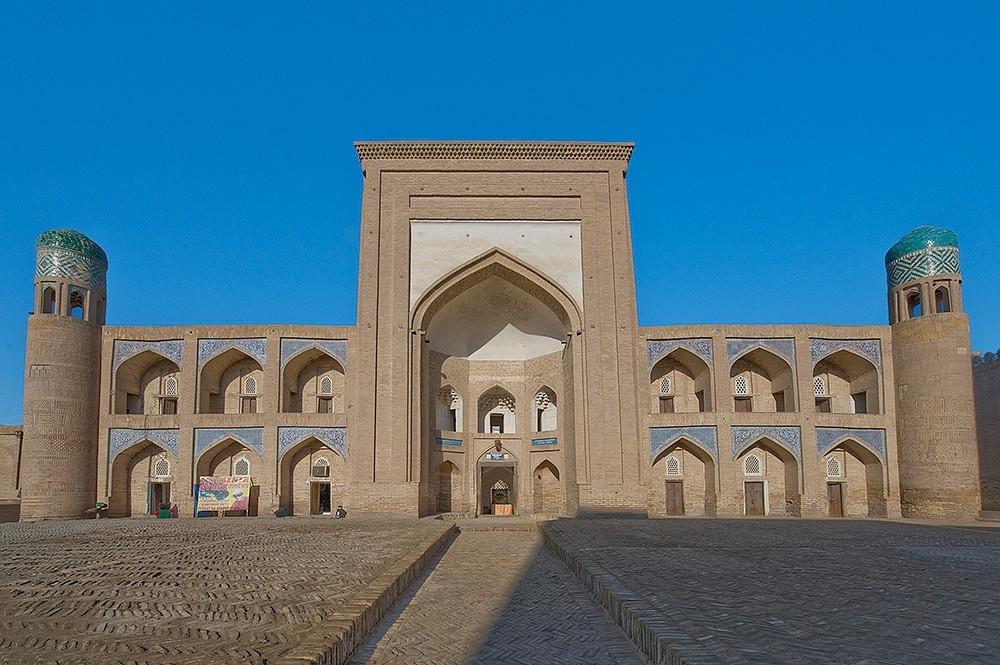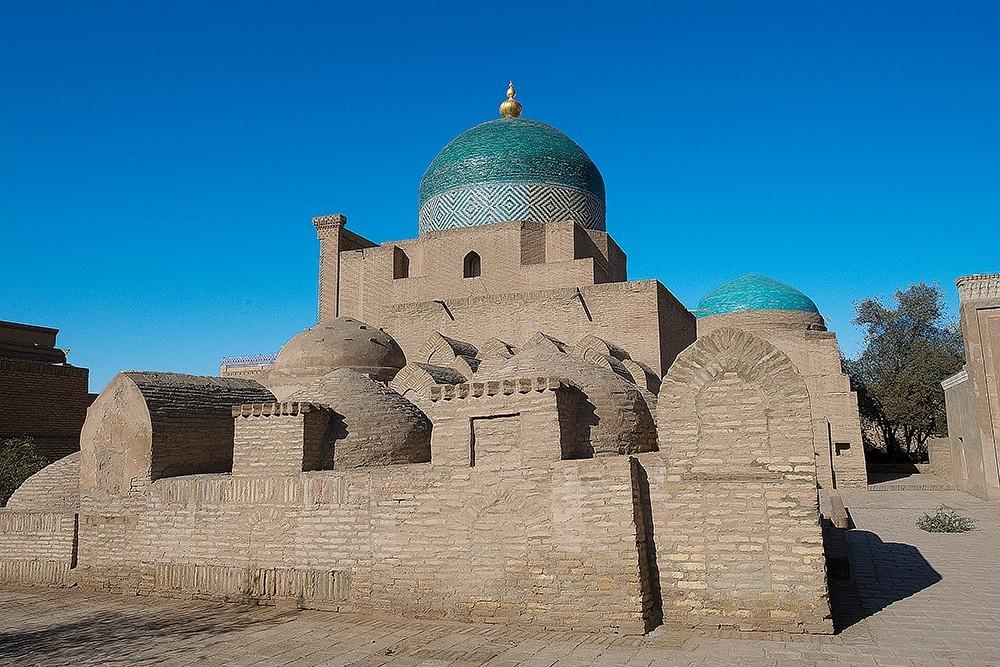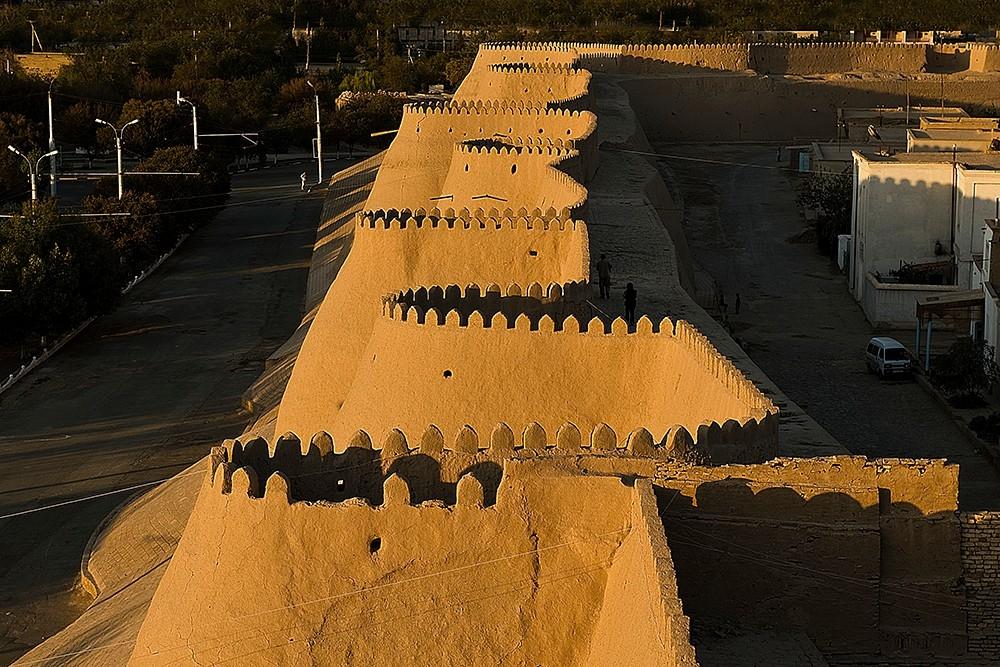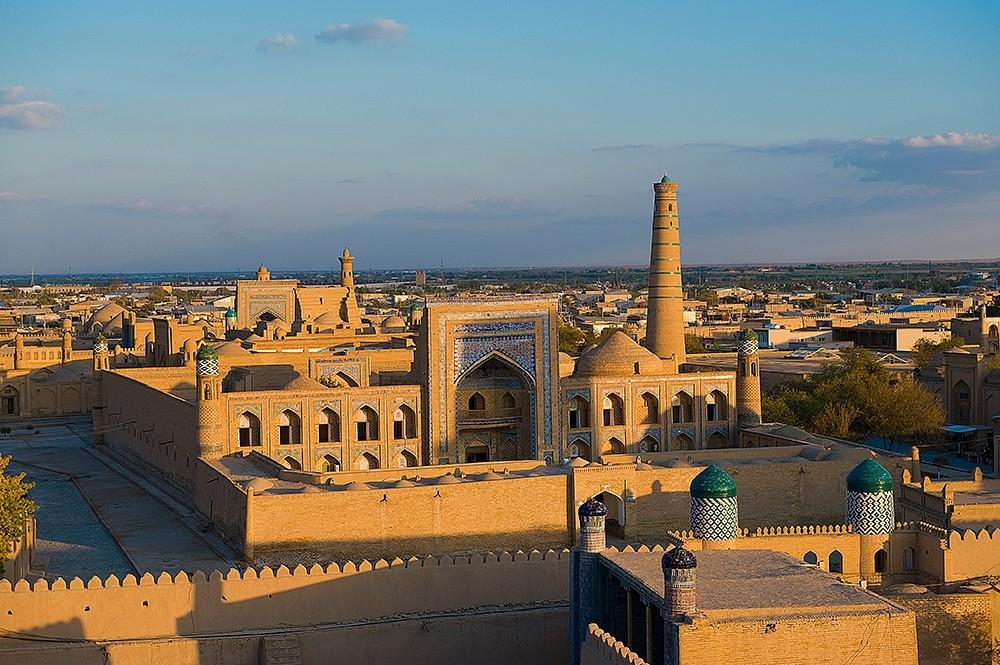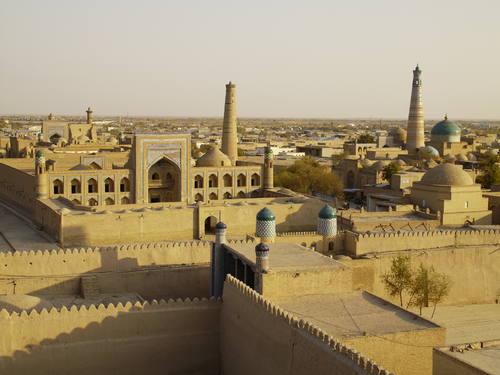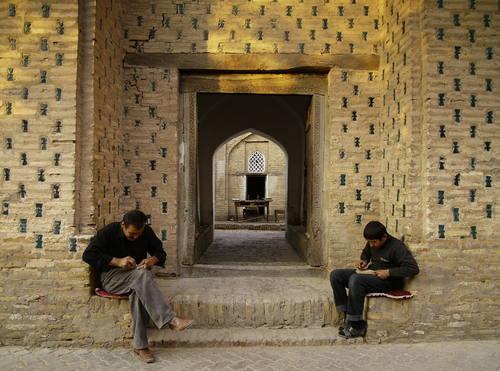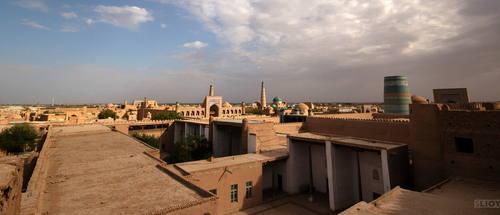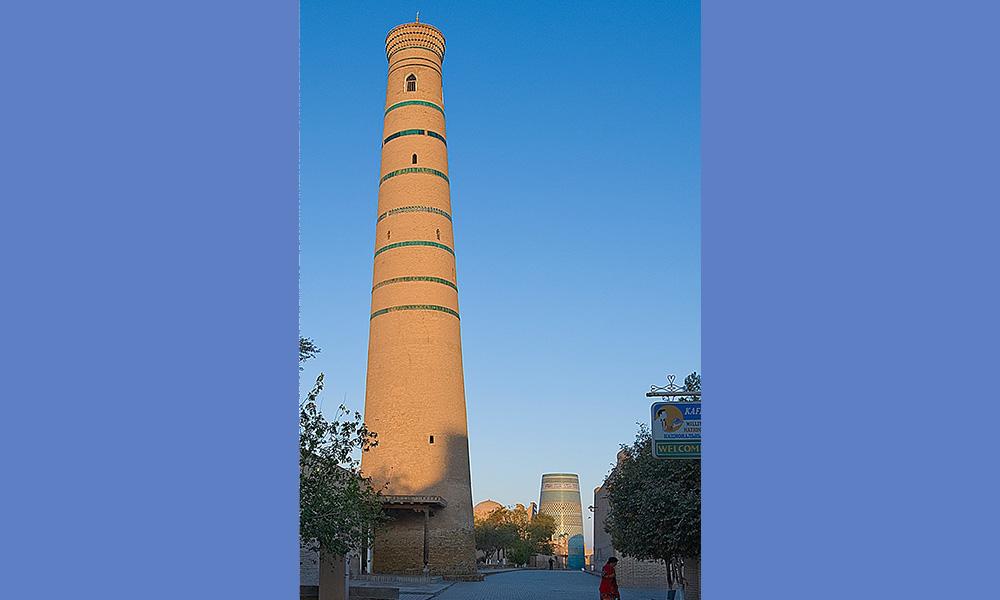Itchan Kala
Itchan Kala, the inner fortress of Khiva, is located to the South of the Amu Darya River (known as the Oxus in ancient times) in the Khorezm region of Uzbekistan and it was the last resting-place of caravans before crossing the desert to Persia.
Itchan Kala has a history that spans over two millennia. The inner town has 26 hectares and was built according to the ancient traditions of Central Asian town building, as a regular rectangle (650 by 400 meters) elongated from south to north and closed by brick fortification walls that are up to ten meters high.
The property is the site of 51 ancient monumental structures and 250 dwellings and displays remarkable types of architectural ensembles such as Djuma Mosque, Oq Mosque, madrasahs of Alla-Kulli-Khan, Muhammad Aminkhon, Muhammad Rakhimkhon, Mausoleums of Pahlavon Mahmoud, Sayid Allavuddin, Shergozikhon as well as caravanserais and markets. The attributes are outstanding examples of Islamic architecture of Central Asia. Djuma Mosque, a mosque with a covered courtyard designed for the rugged climate of Central Asia, is unique in its proportions and the structure of its inner dimensions (55m x 46m), faintly lit by two octagonal lanterns and adorned with 212 columns. The madrasahs, which make up the social areas, have majestic proportions with a simple decoration, and they form another type of Islamic architecture specific to Central Asia.

The place of the architectural heritage of Itchan Kala in the history of Central Asian architecture is determined not only by the abundance of surviving architectural monuments, but also by the unique contribution of Khorezmian master builders to Central Asian architecture and preservation of its classical traditions. The domestic architecture of Khiva, with its enclosed houses with their courtyard, reception room with portico or avian supported by delicately sculptured wooden posts, and private apartments, is also an important attribute of the property that can be studied in its 18th- and 20th-century morphological variants.
However, the outstanding qualities of Itchan Kala derive not so much from the individual monuments but also from the incomparable urban composition of the city, and from the harmony with which the major constructions of the 19thand 20th centuries were integrated into a traditional structure.
Criterion (iii) : Withthe coherent and well preserved urban ensemble of the inner town of Khiva, Itchan Kala bears exceptional testimony to the lost civilizations of Khorezm.
Criterion (iv) : Several monuments of Itchan Kala constitute remarkable and unique types of architectural ensembles, built according to the ancient traditions of Central Asia, which illustrate the development of Islamic architecture between the 14th to the 19th century.
Criterion (v) : The domestic architecture of Khiva, with traditional architectural style, represents an important example of human settlements in Central Asia by virtue of its design and construction.
The boundaries of the property are appropriately drawn encompassing the high fortification walls of the city. All the elements that express the outstanding universal value of Itchan Kala are included within the property.
The total area of the Itchan Kala with its square shaped defensive walls and surroundings has remained intact. The madrasahs, mosques, narrow traditional streets, settlements, caravanserai, marketplaces and minarets are being maintained.
A degree of natural threats exists, in particular termite infestation of wooden structures, soil salinity and humidity affecting the foundations. These threats need to be controlled and necessary actions should be taken in order to retain the intactness of the property.
Itchan Kala retains authenticity and has been maintained in its original state. The restorations that have been carried out have respected the traditional building techniques and the use of traditionally treated local materials such as baked brick, wood and stone.
Itchan Kala was designated as a Reserve under the Decree of the Cabinet of Ministers of the Uzbek SSR in 1967. The property is now classified as a site of national importance.
Relevant national laws and regulations concerning the World Heritage property include: (i) The Law on Protection and Exploitation of Cultural Heritage Properties, 2001; (ii) The Law on Architecture and City-building, 1995; (iii) The Instructions on Rules of Recording, Safeguarding, Maintaining, Utilisation and Restoration of Historical and Cultural Monuments, 1986; (iv) The Instructions on Organization of Buffer Zones for Historical and Cultural Monuments, 1986. The above mentioned laws, rules and instructions are legislative norms applied for the protection of the cultural heritage of Uzbekistan. The execution of these legislative norms is under the responsibility of the Ministry of Tourism and Cultural Heritage and the overall control is undertaken by the Legislative chamber of Oliy Majlis (Parliament) of the Republic of Uzbekistan. For the enforcement of these laws and legislative acts, the Ministry of Culture and Sports develops a state programme aimed at research, conservation and utilization of the cultural heritage of Khorezm region, in particular Itchan Kala. The programme is submitted to and to be approved by the Cabinet of Ministries of Uzbekistan.

Individual architectural Monuments of the Reserve were protected under a number of legislative acts of the state policy of the USSR on the preservation of monuments of history and culture. In 1967 the property was granted the legal status of the State Architectural and Historic Reserve (Resolution no. 61) of the Council of Ministers of the Uzbek SSR. Since 1969 it is a museum and reserve.
Management and controls are carried out by the Ministry of Tourism and Cultural Heritage, through the Principal Board on Monuments Protection, at national level and by the Khorezm Regional Inspection on Preservation and Restoration of Objects of Cultural Heritage at regional level. The use, maintenance and monitoring of the monuments within the boundary of the property are carried out by Itchan Kala Reserve Directorate.
Funding is provided by the State, the Regional and the Itchan Kala Reserve budgets. The state of conservation of the property has improved over the past 15 years. A 10-year complex programme is in the process of being prepared by the Main Department on Preservation and Restoration of Objects of Cultural Heritage and a buffer zone is being defined. To sustainably attend to conservation and management concerns, a management plan is needed as well as resources for its comprehensive implementation.
The official map of Itchan Kala World Heritage property showing boundaries and buffer zone can be found here.
Documents and further information related to Itchan Kala can be found at the UNESCO World Heritage Website.

